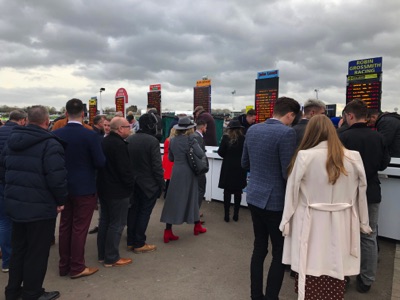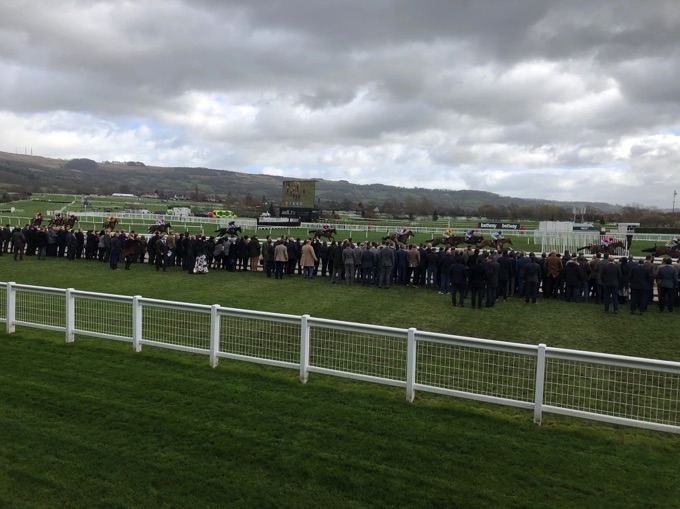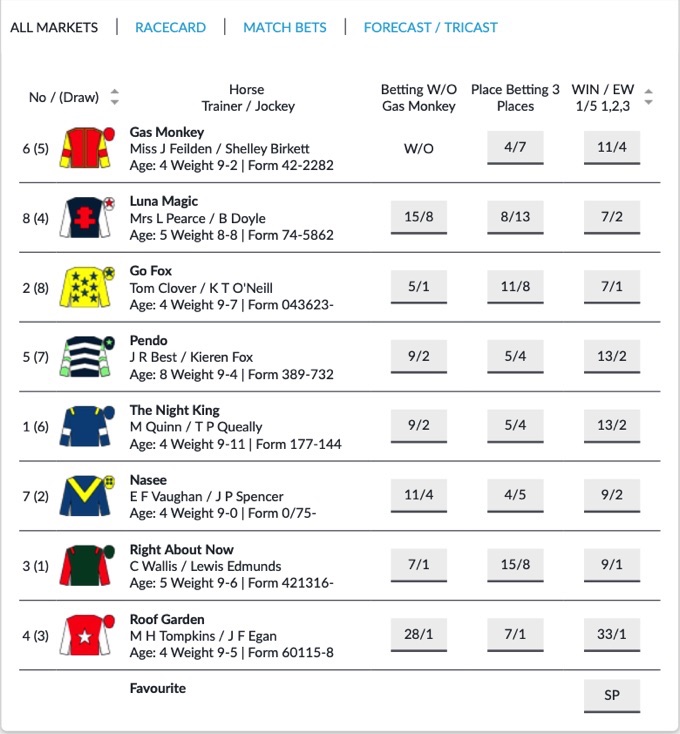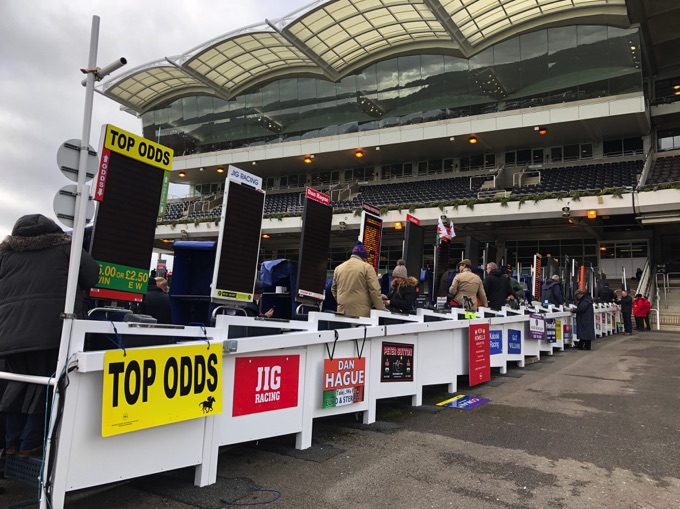 When it comes to betting on horse racing, there is arguably no phrase more important than ‘Starting Price’. It dictates so much of how a bet works, depending on whether or not the bettor chooses to take advantage of the Starting Price or decides to take the price offered at the time of placing the bet. It’s also important in understanding how some of the offers made by bookmakers work.
When it comes to betting on horse racing, there is arguably no phrase more important than ‘Starting Price’. It dictates so much of how a bet works, depending on whether or not the bettor chooses to take advantage of the Starting Price or decides to take the price offered at the time of placing the bet. It’s also important in understanding how some of the offers made by bookmakers work.
Most people understand the concept of the Starting Price, if for no other reason than the name tells you all of the important information. Yet do you know how Starting Prices are calculated, for example? Would you feel confident in known how the Starting Price relates to an offer like the Best Odds Guarantee? If not then read on and we’ll try to make it all as clear as possible so that you know what you’re looking for when you look at your chosen bookie’s odds for a race.
What is the Starting Price?

Let’s start with the most obvious question of all: what a Starting Price is. What odds you’ll get on a horse race is determined mostly by when it is that you attempt to place your bet. That’s because odds fluctuate the closer to getting underway that an event gets, meaning that the odds will either shorten or lengthen accordingly.
Early Bets
If you place your bet weeks or even months before a race then the likelihood is that you’ll get better odds because the full information isn’t available to bookmakers regarding the race.
That includes the likes of which horses are taking part and the form that they’re all in. Wagers that far out are known as ante-post bets and rules apply to them slightly differently than they do to bets placed closer to the race.
Start of the Race
As you will almost certainly have been able to figure out for yourself, the odds that you’d be able to get on a horse at the moment that the race gets underway is what is known as the Starting Price. It is the last fixed price that you’ll find being offered on a horse before the course marital gets the race going.
There’s no way of knowing whether the SP will be longer than the opening odds or shorter, of course, but most bookmakers will give you the option of taking the Starting Price of at least the favourite in every race.
How Starting Prices Are Calculated

Now that we know what the Starting Price is it’s worth having a look at how they’re calculated. Believe it or not, there is actually a body responsible for ensuring that Starting Prices are fair in all races, with the responsibility falling to the Starting Price Regulatory Commission. They have a set of rules that govern how Starting Prices can be created, which have been in-play since 1998 and are regularly updated.
The important thing to remember when it comes to looking at Starting Prices is that they are determined according to the on-course bookmakers. The manner in which the SP is calculated involves in taking all of the prices offered by bookies in a chosen samples on every horse and putting them into a list from longest odds down to shortest. The list is then split in half and the Starting Price will be the shortest odds available in the half of the list that contains the longest odds.
Starting Odds Example
Let’s say that the list of ten bookmakers’ odds on a particular horse looked like the following:
- 8/1
- 8/1
- 15/2
- 15/2
- 7/1
- 7/1
- 7/1
- 7/1
- 13/2
- 6/1
That list would then be split into half, which would leave the following five odds as the longest:
- 8/1
- 8/1
- 15/2
- 15/2
- 7/1
Of those five, 7/1 is the shortest price so that would be declared to be the Starting Price. The prices are taken from SP Qualified Bookmakers, who must show odds against every runner in the race for ten minutes or longer ahead of the off in order to qualify.
The normal minimum sample size used for the calculation of a Starting Prize is six, whilst the maximum is twenty-four. The minimum sample size can be lower if there simply aren’t that many bookies on a course, which has been known to happen at all-weather tracks during the winter, but the absolute lowest in such circumstances is three.
Best Odds Guarantee

We mentioned the Best Odds Guarantee offer n the introduction and why it matters when talking about Starting Prices. This offer is usually only available for on the day prices, meaning that ante-post bets are excluded from the BOG offer that most bookies put forward.
That is sometimes waived if you’re looking at the ante-post market for a big race like the Gold Cup or Grand National, but don’t assume that your chosen bookie will definitely allow BOG offers to come into play simply because you’ve seen that some bookmakers are offering it.
The idea behind the Best Odds Guarantee is to allow you to take a price during the day safe in the knowledge that you won’t miss out if the Starting Price ends up being longer than the price you took in the morning.
Example
Let’s say that you’re betting on a race that is due to get off at 4 pm. You look at lunchtime and get odds of 12/1 for your selection, so you bet £10. That means that you’d be owed £120, plus your initial stake if your horse comes home first. The Starting Price for the horse ends up being 15/1, meaning that you’ve missed out on £30 by taking the early price.
The Best Odds Guarantee offer means that you’ll be paid out at 15/1 rather than 12/1 if you took the Fixed Odds on offer at lunchtime because the Starting Price was better than the odds you took and your bookmaker has promised to give you the best odds available. Rather than being paid £120 plus your stake, therefore, you receive £150 plus your stake and are £30 better off.
The reason we’ve mentioned it here is that it’s important that you do not take the Starting Price when you place your bet if you’re hoping to receive the Best Odds Guarantee on your bet. If you take the Starting Price then you’ll benefit if the SP ends up being longer than the odds at lunchtime, as in our example, but if you look at lunchtime and are offered odds of 12/1 and take the SP and that ends up being 10/1, you’ll be paid at odds of 10/1 instead of 12/1.
Advantages
The key to taking advantage of Best Odds Guarantee offers is to always take the Fixed Odds offered when you look at the horses. This means you’ll never be caught out by the odds coming in short for the Starting Price, which is why it’s such a popular offer made by bookies. Oftentimes they use it as a method of enticing customers from their rivals, so don’t be surprised to see everyone offering it on a race if one of the main bookmakers starts to offer it.
Most bookies will give you the Best Odds Guarantee on Early Prices and Board Prices, but they’ll usually only offer it for ante-post prices on the biggest races in the industry. Even then it’s common for the offer to only kick in when the race is a week or two away, so don’t be expecting it on races if you’re looking months in advance.
It’s also worth noting that plenty of bookies won’t allow you to use bonus money for BOG offers, nor can you Cash Out your bet if you’re hoping to get the Best Odds Guarantee applied to it. You’ll also often find that most bookmakers only offer the Best Odds Guarantee on UK & Irish racing, though some will offer it for events taking place further afield.
